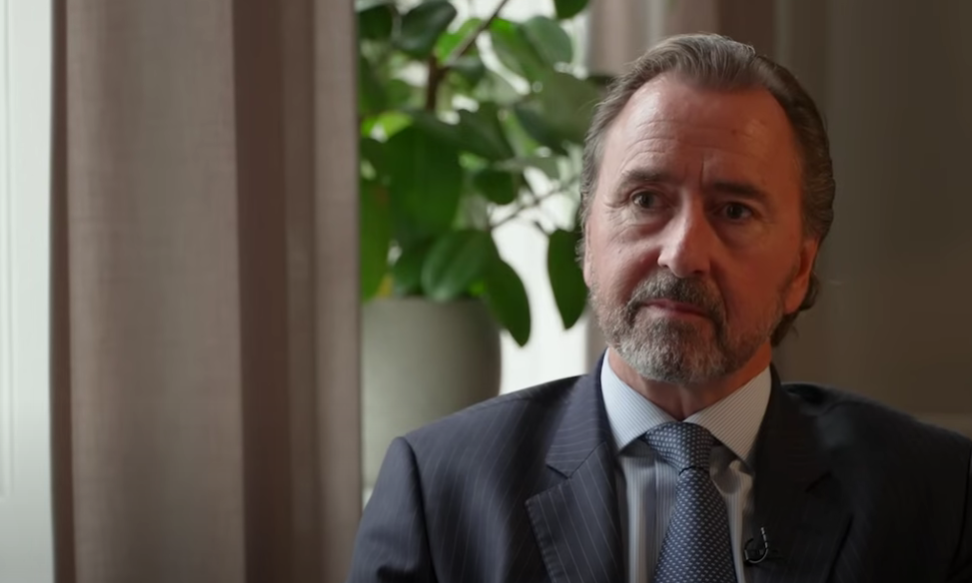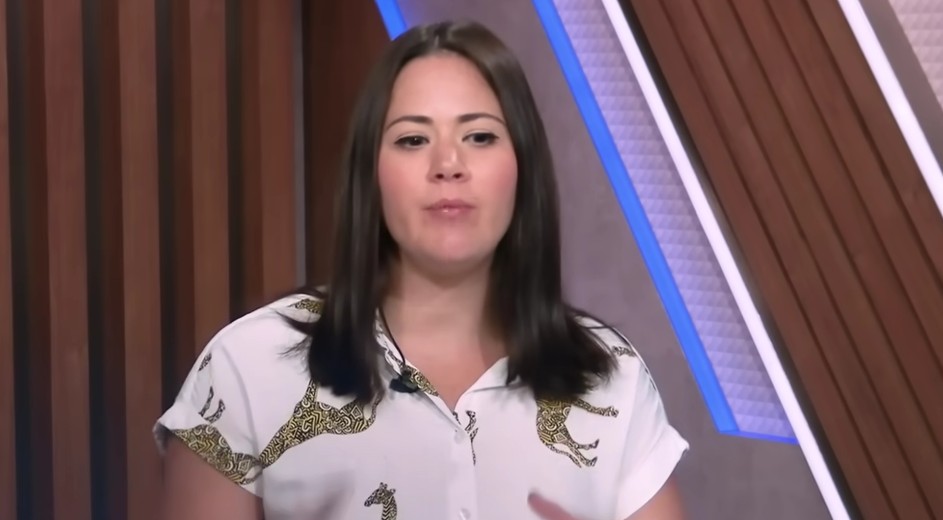Marknadsnyheter
Truqap plus Faslodex approved in the EU for patients with advanced ER-positive breast cancer
First and only AKT inhibitor approved in the EU for breast cancer patients with specific biomarker alterations (PIK3CA, AKT1 or PTEN). Approval based on CAPItello-291 results which showed this combination reduced the risk of disease progression or death by 50% vs. Faslodex alone in a biomarker-altered population.
AstraZeneca’s Truqap (capivasertib) in combination with Faslodex (fulvestrant) has been approved in the European Union (EU) for the treatment of adult patients with estrogen receptor (ER)-positive, HER2‑negative locally advanced or metastatic breast cancer with one or more PIK3CA, AKT1, or PTEN-alterations following recurrence or progression on or after an endocrine-based regimen.
The approval by the European Commission follows the positive opinion of the Committee for Medicinal Products for Human Use and is based on results from the CAPItello-291 Phase III trial published in The New England Journal of Medicine.1
In the trial, Truqap in combination with Faslodex reduced the risk of disease progression or death by 50% versus Faslodex in combination with placebo in patients with tumours harbouring PI3K, AKT or PTEN alterations (based on hazard ratio of 0.50, 95% confidence interval 0.38-0.65; p=<0.001; median progression-free survival (PFS) 7.3 versus 3.1 months).1
In Europe, breast cancer remains the leading cause of cancer death, with more than 140,000 deaths in 2022 and more than 550,000 patients diagnosed in the same year.2 Hormone receptor (HR)-positive breast cancer (expressing estrogen or progesterone receptors, or both), is the most common subtype of breast cancer with 70% of tumours considered HR-positive and HER2-negative.3 More than 97% of HR-positive breast cancer tumours are ER-positive.4,5 Collectively, mutations in PIK3CA, AKT1 and alterations in PTEN occur frequently, affecting approximately 50% of patients with advanced HR-positive breast cancer.6-8
Mafalda Oliveira, MD, PhD, Vall d’Hebron University Hospital, and Senior Clinical Investigator of the Vall d’Hebron Institute of Oncology’s Breast Cancer Group in Barcelona, Spain, said: “Patients with advanced ER-positive breast cancer typically experience tumour progression or resistance with widely used endocrine-based treatment regimens, and there is an urgent need to provide them more time with their disease under control. Today’s approval is welcome news for approximately half of ER-positive breast cancer patients in Europe who have tumours with these biomarkers, and it is important for clinicians to test and identify eligible patients who may be able to benefit from this combination.”
Dave Fredrickson, Executive Vice President, Oncology Business Unit, AstraZeneca, said:
“Truqap is now the first and only AKT inhibitor approved in the European Union for patients with ER-positive breast cancer who have tumours harbouring these specific biomarkers. Breast cancer continues to be the leading cause of cancer-related death in Europe, and today’s news represents a significant step forward in providing an important new treatment option for patients in need of new, innovative therapies.”
In the CAPItello-291 trial, the safety profile of Truqap plus Faslodex was similar to that observed in previous trials evaluating this combination.1
Regulatory applications are currently under review in China and several other countries. Similar indications for Truqap in combination with Faslodex are already approved in the US, Japan and several other countries based on the CAPItello-291 trial.
Financial considerations
Following this approval in the EU, Astex Therapeutics is eligible to receive a milestone payment from AstraZeneca on first commercial sale of the drug in the EU as well as royalties on future sales in line with the agreement between the two companies.
Notes
HR-positive breast cancer
The growth of HR-positive breast cancer cells is often driven by estrogen receptors, and endocrine therapies that target ER-driven disease are widely used as 1st-line treatment in the advanced setting, and often paired with CDK4/6 inhibitors.9-11 However, resistance to CDK4/6 inhibitors and current endocrine therapies develops in many patients with advanced disease.10 Once this occurs, treatment options are limited – with chemotherapy being the current standard of care – and survival rates are low with approximately 35% of patients anticipated to live beyond five years after diagnosis.3,10,12
The optimisation of endocrine therapy and overcoming resistance to enable patients to continue benefiting from these treatments, as well as identifying new therapies for those who are less likely to benefit, are active areas of focus for breast cancer research.
CAPItello-291
CAPItello-291 is a Phase III, double-blind, randomised trial evaluating the efficacy of Truqap in combination with Faslodex versus placebo plus Faslodex for the treatment of locally advanced (inoperable) or metastatic HR-positive (ER-positive and ER-positive, progesterone receptor-positive), HER2-low or negative (immunohistochemistry (IHC) 0 or 1+, or IHC 2+/in-situ hybridisation (ISH)-negative) breast cancer.
The global trial enrolled 708 adult patients with histologically confirmed HR-positive, HER2-low or negative breast cancer whose disease has recurred or progressed during or after aromatase inhibitor therapy, with or without a CDK4/6 inhibitor, and up to one line of chemotherapy for advanced disease. The trial has dual primary endpoints of PFS in the overall patient population and in a population of patients whose tumours have qualifying alterations in the PI3K/AKT pathway (PIK3CA, AKT1 or PTEN genes). In the trial, approximately 40% of tumours had these alterations and approximately 70% of patients received a prior CDK4/6 inhibitor.
Truqap
Truqap is a first-in-class, potent, adenosine triphosphate (ATP)-competitive inhibitor of all three AKT isoforms (AKT1/2/3). Truqap 400mg is administered twice daily according to an intermittent dosing schedule of four days on and three days off. This was chosen in early phase trials based on tolerability and the degree of target inhibition.
Truqap is approved in the US, EU, Japan and several other countries for the treatment of adult patients with HR-positive (or ER-positive), HER2-negative locally advanced or metastatic breast cancer with one or more biomarker alterations (PIK3CA, AKT1 or PTEN) following recurrence or progression on or after an endocrine-based regimen based on the results from the CAPItello-291 trial. Truqap is also approved in Australia for the treatment of adult patients with HR-positive, HER2-negative locally advanced or metastatic breast cancer following recurrence or progression on or after an endocrine based regimen based on these trial results.
Truqap is currently being evaluated in Phase III trials for the treatment of breast cancer (CAPItello-292) and prostate cancer (CAPItello-280 and CAPItello-281) in combination with established treatments.
Truqap was discovered by AstraZeneca subsequent to a collaboration with Astex Therapeutics (and its collaboration with the Institute of Cancer Research and Cancer Research Technology Limited).
Faslodex
Faslodex is an endocrine therapy indicated for the treatment of ER-positive, locally advanced or metastatic breast cancer in postmenopausal women not previously treated with endocrine therapy, or with disease relapse on or after adjuvant anti-estrogen therapy, or disease progression on anti-estrogen therapy.
In the US, EU and Japan, Faslodex is also approved in combination with CDK4/6 inhibitors for the treatment of women with HR-positive, HER2-negative advanced or metastatic breast cancer, whose cancer has progressed after endocrine medicine. Faslodex represents a hormonal treatment approach that helps to slow tumour growth by blocking and degrading the estrogen receptor – a key driver of disease progression.
Faslodex is approved as monotherapy or in combination with medicines from various drug classes including CDK4/6, PI3K and AKT inhibitors for the treatment of patients with HR-positive advanced breast cancer and is being evaluated in combination with medicines from other drug classes.
AstraZeneca in breast cancer
Driven by a growing understanding of breast cancer biology, AstraZeneca is starting to challenge, and redefine, the current clinical paradigm for how breast cancer is classified and treated to deliver even more effective treatments to patients in need – with the bold ambition to one day eliminate breast cancer as a cause of death.
AstraZeneca has a comprehensive portfolio of approved and promising compounds in development that leverage different mechanisms of action to address the biologically diverse breast cancer tumour environment.
With Enhertu (trastuzumab deruxtecan), a HER2-directed antibody drug conjugate (ADC), AstraZeneca and Daiichi Sankyo are aiming to improve outcomes in previously treated HER2-positive and HER2-low metastatic breast cancer and are exploring its potential in earlier lines of treatment and in new breast cancer settings.
In HR-positive breast cancer, AstraZeneca continues to improve outcomes with foundational medicines Faslodex and Zoladex (goserelin) and aims to reshape the HR-positive space with first-in-class AKT inhibitor, Truqap, and next-generation SERD and potential new medicine camizestrant. AstraZeneca is also collaborating with Daiichi Sankyo to explore the potential of TROP2-directed ADC, datopotamab deruxtecan, in this setting.
PARP inhibitor Lynparza (olaparib) is a targeted treatment option that has been studied in early and metastatic breast cancer patients with an inherited BRCA mutation. AstraZeneca with MSD (Merck & Co., Inc. in the US and Canada) continue to research Lynparza in these settings and to explore its potential in earlier disease.
To bring much-needed treatment options to patients with triple-negative breast cancer, an aggressive form of breast cancer, AstraZeneca is evaluating the potential of datopotamab deruxtecan alone and in combination with immunotherapy Imfinzi (durvalumab), and Imfinzi in combination with other oncology medicines, including Lynparza and Enhertu.
AstraZeneca in oncology
AstraZeneca is leading a revolution in oncology with the ambition to provide cures for cancer in every form, following the science to understand cancer and all its complexities to discover, develop and deliver life-changing medicines to patients.
The Company’s focus is on some of the most challenging cancers. It is through persistent innovation that AstraZeneca has built one of the most diverse portfolios and pipelines in the industry, with the potential to catalyse changes in the practice of medicine and transform the patient experience.
AstraZeneca has the vision to redefine cancer care and, one day, eliminate cancer as a cause of death.
AstraZeneca (LSE/STO/Nasdaq: AZN) is a global, science-led biopharmaceutical company that focuses on the discovery, development, and commercialisation of prescription medicines in Oncology, Rare Diseases, and BioPharmaceuticals, including Cardiovascular, Renal & Metabolism, and Respiratory & Immunology. Based in Cambridge, UK, AstraZeneca’s innovative medicines are sold in more than 125 countries and used by millions of patients worldwide. Please visit astrazeneca.com and follow the Company on social media @AstraZeneca
Contacts
For details on how to contact the Investor Relations Team, please click here. For Media contacts, click here.
References
- Turner N, et al. Capivasertib in Hormone Receptor–Positive Advanced Breast Cancer. NEJM. 2023; 388:2058–70.
- World Health Organization. GLOBOCAN Europe Fact Sheet. Available at: https://gco.iarc.who.int/media/globocan/factsheets/populations/908-europe-fact-sheet.pdf. Accessed June 2024.
- National Cancer Institute. Surveillance, Epidemiology and End Results Program. Available at: https://seer.cancer.gov/statfacts/html/breast-subtypes.html. Accessed June 2024.
- Bae S, et al. Poor prognosis of single hormone receptor positive breast cancer: similar outcome as triple-negative breast cancer. BMC Cancer. 2015; 15:138.
- Cserni G, et al. Estrogen Receptor Negative and Progesterone Receptor Positive Breast Carcinomas—How Frequent are they? Pathol. Oncol. Res. 2011; 17:663–668.
- Howell S J, et al. Fulvestrant plus capivasertib versus placebo after relapse or progression on an aromatase inhibitor in metastatic, oestrogen receptor-positive, HER2-negative breast cancer (FAKTION). J Clin Oncol. 2022; 23:851-64.
- Hortobagyi G N, et al. Correlative Analysis of Genetic Alterations and Everolimus Benefit in Hormone Receptor-Positive, Human Epidermal Growth Factor Receptor 2-Negative Advanced Breast Cancer: Results From BOLERO-2. J Clin Oncol. 2016; 34:419-26.
- Millis S Z, et al. Landscape of phosphatidylinositol-3-kinase pathway alterations across 19784 diverse solid tumors. JAMA Oncol. 2016;2(12):1565-73.
- Lin M, et al. Comparative Overall Survival of CDK4/6 Inhibitors Plus Endocrine Therapy vs. Endocrine Therapy Alone for Hormone receptor-positive, HER2-negative metastatic breast cancer. J Cancer. 2020; 10.7150/jca.48944.
- Lloyd M R, et al. Mechanisms of Resistance to CDK4/6 Blockade in Advanced Hormone Receptor–positive, HER2-negative Breast Cancer and Emerging Therapeutic Opportunities. Clin Cancer Res. 2022; 28(5):821-30.
- Scabia V, et al. Estrogen receptor positive breast cancers have patient specific hormone sensitivities and rely on progesterone receptor. Nat Commun. 2022; 10.1038/s41467-022-30898-0.
- National Comprehensive Cancer Network. Clinical Practice Guidelines in Oncology (NCCN Guidelines). Available at: https://www.nccn.org/guidelines/guidelines-detail?category=1&id=1419. Accessed June 2024.
Marknadsnyheter
JRS chefsstrateg Torbjörn Söderberg om börsen framåt

JRS chefsstrateg Torbjörn Söderberg pratar med Jesper Norberg på EFN om börsens väg framåt. Man tar upp värderingar och makro, samt hur han själv väljer att agera.
Marknadsnyheter
Kreditkort skapar problem för USAs konsumenter – CNBC granskar

CNBC tittar närmare på hur kreditkort skapar problem för konsumenterna i USA som får betala räntor på upp till 36 %, och ovanpå det kommer nya avgifter. När det skapar så här stora problem blir det ett problem för ekonomin som helhet, det är inte bara ett individuellt problem.
CNBC granskar kreditkort och problemen de skapar
Vi skrev nyligen om rekordhög belåning hos investerare i USA. Det är samma sak här, när det är så många individer som är så hårt belånade blir det ett problem för hela aktiemarknaden.
Marknadsnyheter
Varför går det så dåligt för Las Vegas?

Det pratas mycket om att Las Vegas har blivit tomt. Det kommer färre besökare både från USA och utlandet, i en sådan omfattning att vägar som förut var fyllda med bilar nu är smidiga att ta sig fram på. De enda som fortsatt verkar komma är affärsresenärerna.
Las Vegas får mycket kritik för att ha blivit för giriga. Hotellen har börjat lägga på alla möjliga konstiga avgifter för att tjäna mer, restaurangerna lägger på avgifter och dessutom har det tillkommit flera nya skatter. Besökarna känner sig lurade.
-
Analys från DailyFX10 år ago
EUR/USD Flirts with Monthly Close Under 30 Year Trendline
-
Marknadsnyheter5 år ago
BrainCool AB (publ): erhåller bidrag (grant) om 0,9 MSEK från Vinnova för bolagets projekt inom behandling av covid-19 patienter med hög feber
-

 Marknadsnyheter3 år ago
Marknadsnyheter3 år agoUpptäck de bästa verktygen för att analysera Bitcoin!
-
Analys från DailyFX12 år ago
Japanese Yen Breakout or Fakeout? ZAR/JPY May Provide the Answer
-

 Marknadsnyheter2 år ago
Marknadsnyheter2 år agoDärför föredrar svenska spelare att spela via mobiltelefonen
-
Analys från DailyFX12 år ago
Price & Time: Key Levels to Watch in the Aftermath of NFP
-
Analys från DailyFX8 år ago
Gold Prices Falter at Resistance: Is the Bullish Run Finished?
-

 Nyheter7 år ago
Nyheter7 år agoTeknisk analys med Martin Hallström och Nils Brobacke

